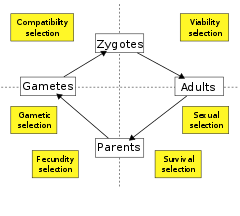Adaptation and natural selection are central concepts in evolutionary biology, describing how organisms evolve in response to their environment. These processes are fundamental to understanding the diversity of life on Earth.
Adaptation:
Adaptation is the process by which organisms acquire characteristics that improve their chances of surviving and procreating in a particular setting. Natural selection within a population has produced these qualities as a result of heritable variation.

Natural Selection:
The process that propels adaptability is known as natural selection. It happens when people that possess particular beneficial features have a higher chance of surviving, procreating, and passing those traits on to their progeny. This causes advantageous features to gradually accumulate in a population.

Types of Natural Selection:
Natural selection can take different forms, including:
Stabilizing Selection: Favoring intermediate traits and reducing variation in a population.
Directional Selection: Favoring one extreme of a trait, leading to a shift in the population's characteristics.
Disruptive Selection: Favoring both extremes of a trait, potentially leading to the formation of new species.
Examples of Adaptation:
The long neck of the giraffe, which allows it to reach high leaves for food.
The camouflage of certain insects, which helps them avoid predators.
The antibiotic resistance of bacteria, which evolves in response to selective pressure from antibiotics.
--> Fundamental processes in evolutionary biology, adaptation and natural selection shape an organism's traits and characteristics to better fit its surroundings. Gaining an appreciation of these ideas is essential to appreciating the diversity and complexity of life on Earth.
Click this link to order Gentaur Products:
